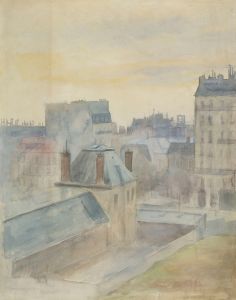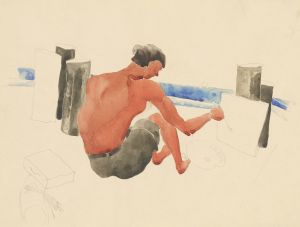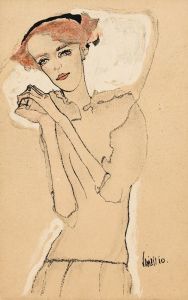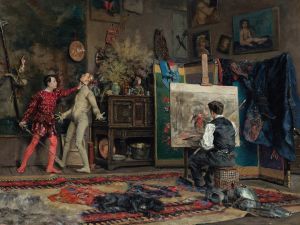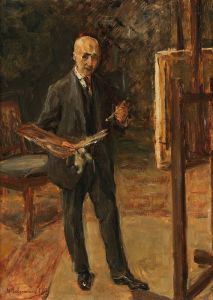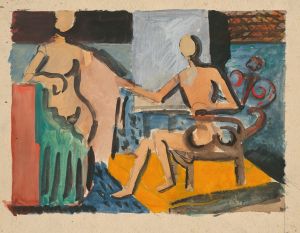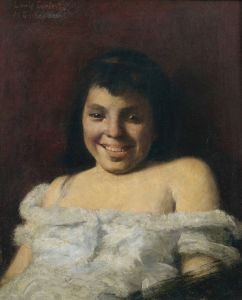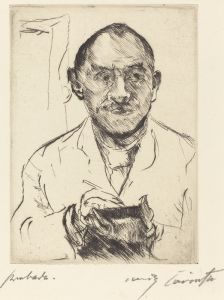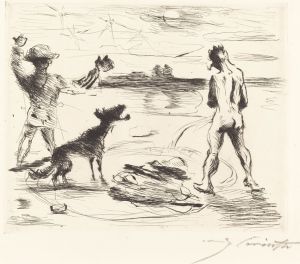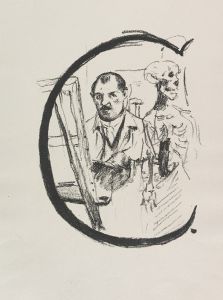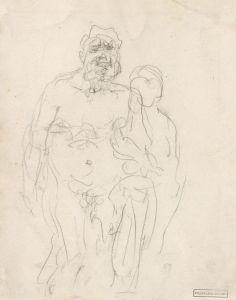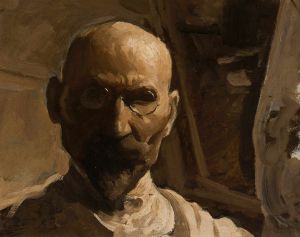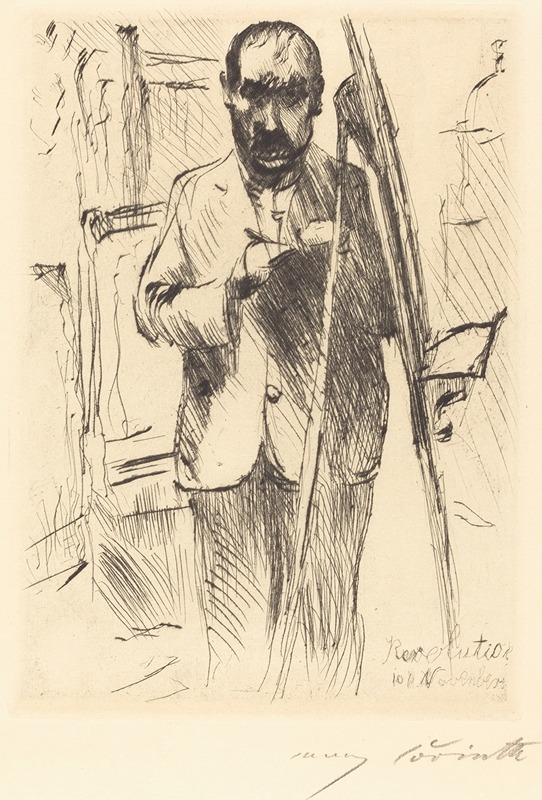
Self-Portrait with Easel
A hand-painted replica of Lovis Corinth’s masterpiece Self-Portrait with Easel, meticulously crafted by professional artists to capture the true essence of the original. Each piece is created with museum-quality canvas and rare mineral pigments, carefully painted by experienced artists with delicate brushstrokes and rich, layered colors to perfectly recreate the texture of the original artwork. Unlike machine-printed reproductions, this hand-painted version brings the painting to life, infused with the artist’s emotions and skill in every stroke. Whether for personal collection or home decoration, it instantly elevates the artistic atmosphere of any space.
Lovis Corinth, a prominent German painter and printmaker, created "Self-Portrait with Easel" in 1890. This work is a significant piece within Corinth's oeuvre, showcasing his evolving style and the influence of various art movements of the time. Corinth was known for his ability to blend Impressionism and Expressionism, and this self-portrait is a testament to his skill in capturing both the physical likeness and the psychological depth of his subjects.
"Self-Portrait with Easel" depicts Corinth himself, standing confidently beside his easel. The composition is intimate, offering a glimpse into the artist's personal space and his relationship with his craft. Corinth's gaze is direct and engaging, inviting viewers to connect with him on a personal level. The painting is characterized by loose, expressive brushstrokes and a vibrant color palette, which are hallmarks of Corinth's style during this period.
The late 19th century was a transformative time for Corinth, who had studied at the Academy of Fine Arts in Munich and later in Paris, where he was exposed to the works of the Impressionists. This exposure is evident in "Self-Portrait with Easel," as the painting reflects a departure from the more rigid academic style he initially learned. Instead, Corinth embraced a more fluid and dynamic approach, capturing the essence of his subject matter rather than focusing solely on meticulous detail.
Corinth's self-portraits are notable for their introspective quality, and this piece is no exception. It reveals his self-awareness and his contemplation of his identity as an artist. The inclusion of the easel in the composition is symbolic, representing not only his profession but also his dedication to his art. The painting serves as a visual diary, documenting Corinth's journey and his artistic evolution.
Throughout his career, Corinth faced numerous challenges, including a stroke in 1911 that affected his ability to paint. Despite this, he continued to produce art, adapting his technique to accommodate his physical limitations. "Self-Portrait with Easel" predates this period, capturing Corinth in his earlier years, full of vigor and ambition.
The painting is housed in the collection of the Städtische Galerie im Lenbachhaus in Munich, Germany. It remains an important work for understanding Corinth's contribution to modern art and his role in bridging the gap between Impressionism and Expressionism. His ability to convey emotion and character through his self-portraits has left a lasting impact on the art world.
In summary, "Self-Portrait with Easel" by Lovis Corinth is a compelling representation of the artist's early style and his exploration of self-identity through art. It reflects the broader artistic trends of the late 19th century while offering a personal insight into Corinth's life and work.





